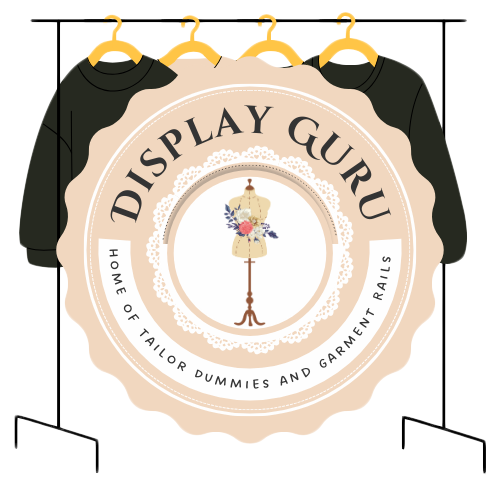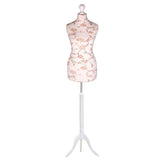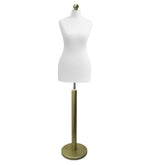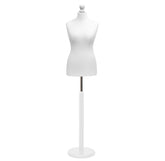Boost Sales with Better Clothing Display Stands
The right clothing display stands are so much more than just a place to hang your clothes. Think of them as your shop's silent salesperson, constantly telling your brand's story and shaping how customers feel the moment they walk in. Choosing your displays isn't just a practical task; it's a vital investment in the whole shopping experience, turning a simple space into a destination.
The Hidden Power of Professional Clothing Displays
Imagine your shop floor is a stage. Your hero products are the stars, but it's the clothing display stands that are the crucial supporting actors, making sure those stars shine. They aren't just functional bits of metal or wood; they're powerful visual merchandising tools that guide the customer’s eye, create a specific atmosphere, and ultimately, drive sales. How an outfit is presented can instantly tell a customer everything about its quality, style, and where they might wear it.
A well-chosen display stand does the heavy lifting for you. A sleek, minimalist metal rail whispers modern sophistication. A rustic wooden mannequin suggests something more organic and handcrafted. This quiet conversation builds an instant connection with your target customer, long before they've even touched a single garment.
From Fixture to First Impression
That first glimpse of your displays sets the tone for everything that follows. If a customer is met with cluttered, wobbly, or mismatched stands, it can create a feeling of disorganisation, cheapening the very clothes you’re trying to sell. On the other hand, clean, sturdy, and on-brand displays signal quality and a real attention to detail.
This investment in presentation pays off. Just look at the UK retail sector's recent performance. UK clothing retailers saw a massive 3.7% jump in sales volume in March 2025, helped along by good weather that encouraged people to shop for the new season. This was part of a bigger quarterly increase of 1.6%—the largest in almost four years. Smart retailers are seizing on this by investing in displays that capture this renewed customer interest. You can read more about these retail trends and their impact.
The core idea is simple: a display stand isn't just a piece of equipment. It’s the frame that makes your art—your clothing—look its absolute best. It’s the difference between a garment hanging limply and an outfit that tells a story.
Setting the Stage for Success
Getting to grips with the different types of clothing display stands is the first step to building a visual strategy that works. Each type has a specific job, and knowing when and where to use them is the key to creating a shop floor that feels dynamic and exciting. From eye-catching mannequins to practical garment rails, the right mix can completely change how customers engage with your products. For more detailed guidance, check out our complete guide on clothing display racks.
This guide will walk you through the main categories of displays, helping you pick the perfect tools to:
- Tell your brand's unique story through carefully chosen materials and styles.
- Make your star pieces stand out and guide customers towards your best items.
- Create an organised, inviting atmosphere that makes people want to browse and explore.
Finding the Right Display Stand for Your Apparel
Choosing the perfect display stands for your clothing can feel a bit like navigating a maze. With so many styles, materials, and functions out there, it’s easy to get lost. But don't worry—once you get to grips with the main categories, you'll be able to make a confident choice that makes your garments shine and truly connects with your customers.
Think of your shop floor as a gallery. Each display stand is a specialised tool designed to present your art—your clothing—in the best possible light. You wouldn't put a delicate watercolour in a heavy, ornate frame, would you? The same idea applies here. Every stand has its own purpose and personality.
The Stars of the Show Versus the Workhorses
At the most basic level, you're dealing with two main players: mannequins and garment rails.
A mannequin is the undeniable star of any visual merchandising setup. It’s a storyteller. It creates a complete, aspirational look that shows customers not just an item of clothing, but an entire lifestyle. Whether you choose a realistic, abstract, or headless style, a mannequin's job is to create a powerful focal point that draws the eye.
In contrast, a simple garment rail is the reliable workhorse of your shop. Its function is less about telling a story and more about accessibility and volume. It invites customers to get hands-on, to touch the fabrics, browse the sizes, and explore your collection with ease. So, while a mannequin presents a curated vision, a rail offers a tangible, interactive experience.
This image gives a great overview of the different display types you'll come across in a retail space.
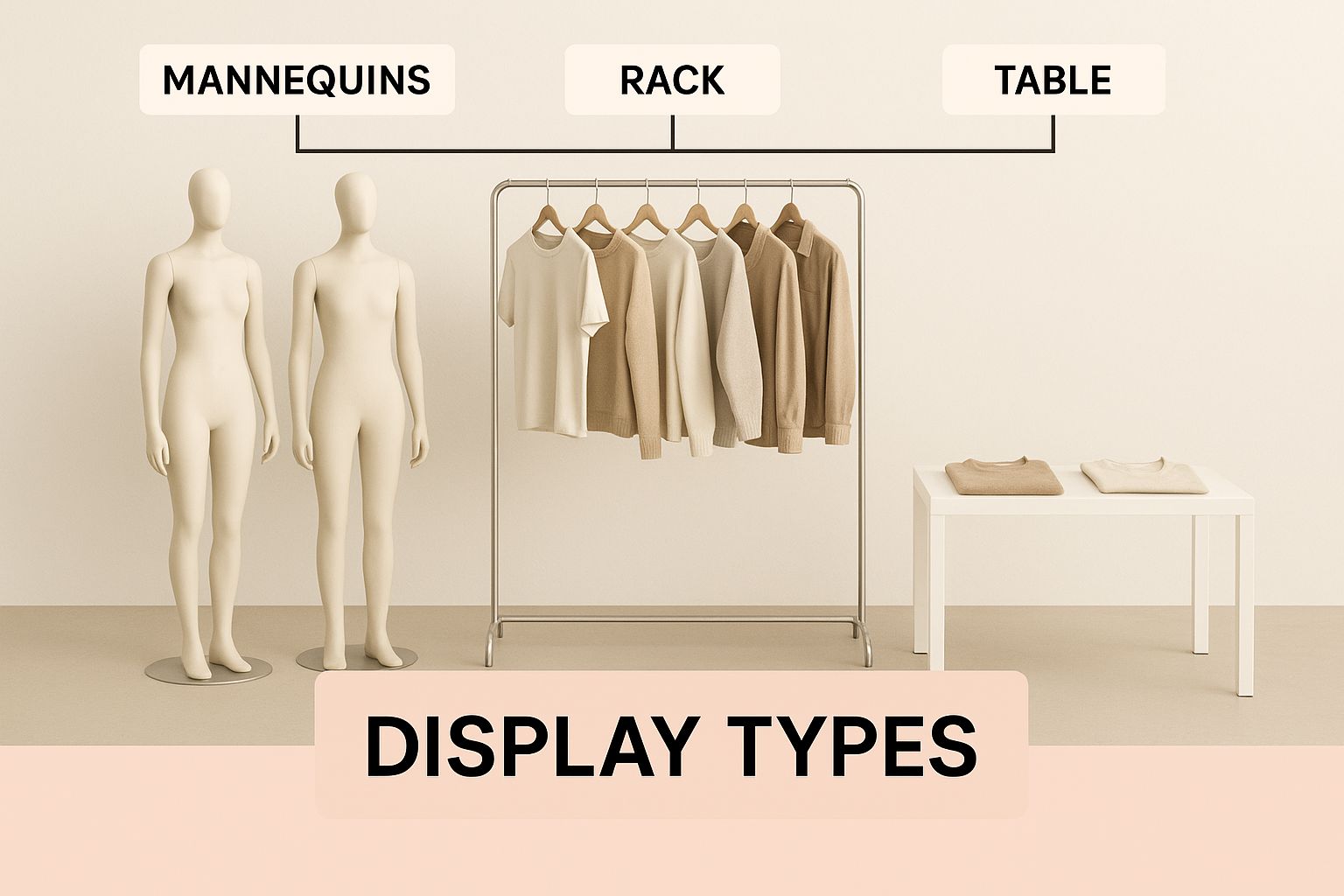
As you can see, the hierarchy moves from high-impact visual storytellers like mannequins to more practical, accessible options like racks and tables.
Understanding the Key Players
To make the right decision, you need to know the specific strengths of each type of clothing display stand. Each one serves a different role in guiding your customer’s journey through the store.
-
Mannequins: These come in all shapes and sizes, from hyper-realistic models that create a lifelike scene to abstract or headless figures that keep the focus squarely on the clothing. They are absolutely essential for window displays and in-store focal points, perfect for showing off your most important outfits.
-
Dress Forms: Often confused with mannequins, dress forms have a dual purpose. For designers and tailors, they're a practical tool for draping and fitting. In a shop, their fabric-covered bodies and classic shape add a touch of timeless, artisanal elegance, making them ideal for displaying bespoke or delicate pieces.
-
Garment Rails: These are the backbone of most clothing shops. Available in countless styles—from industrial black pipe to polished chrome—they are built for capacity and easy browsing. Use them to organise collections by size, colour, or style.
-
Speciality Displays: This category covers everything else, like nesting tables, tiered stands, and dump bins. Nesting tables are brilliant for creating layered displays of folded items like jumpers or jeans. Dump bins, on the other hand, are perfect for promotional items and impulse buys near the checkout.
A well-merchandised shop uses a mix of these elements to create a dynamic environment. A mannequin captures attention from afar, drawing a customer in, while a nearby garment rail encourages them to explore similar items and find their size.
The importance of getting this mix right is reflected in the market itself. The global garment display stand market, valued at around $2 billion in 2025, is projected to grow by 7% annually to hit nearly $3.5 billion by 2033. This growth shows a clear, industry-wide recognition that smart visual merchandising is key to a better customer experience.
Making the Right Choice for Your Garments
Ultimately, your decision comes down to matching the stand to the specific garment you're selling. Not all displays are created equal, and the right pairing can make all the difference in how a product is perceived.
To simplify this, here’s a quick-reference table to help you match the right stand to your merchandise.
Matching Display Stands to Your Merchandise
| Stand Type | Best For Showcasing | Ideal Brand Style | Key Function |
|---|---|---|---|
| Mannequin | Complete outfits, new arrivals, hero pieces | Aspirational, high-fashion, lifestyle | Visual storytelling, creating desire |
| Dress Form | Delicate items, bespoke tailoring, bridal wear | Boutique, artisanal, classic elegance | Highlighting craftsmanship and detail |
| Garment Rail | Full collections, size ranges, basics | Accessible, modern, high-volume | Organisation, easy browsing, accessibility |
| Speciality Display | Folded goods, sale items, accessories | Promotional, practical, impulse-driven | Driving promotions, maximising space |
Choosing correctly shows you understand your product's value. A heavy winter coat, for instance, needs a sturdy, robust rack that can handle its weight without buckling. Displaying it on a flimsy stand sends a subtle message that the product itself might be poor quality. On the flip side, a delicate silk blouse would be right at home on an elegant dress form or a minimalist mannequin, where its fine details can be truly appreciated. Our guide on selecting the best retail display stands offers even more advice on creating presentations that sell.
By understanding these foundational types and their roles, you can start building a visual strategy that not only looks great but also actively helps drive sales.
Matching Your Stand to Your Store and Brand
Choosing the right clothing display stand is about more than just finding a place to hang a garment. It’s a strategic move that needs to juggle your physical space, your brand’s personality, and, of course, your budget. Think of your displays as part of your team; they should work just as hard as you do to communicate your brand's story.
The whole process kicks off with a few straightforward questions. If you run a small, intimate boutique, do you need versatile garment rails on wheels that let you dream up fresh layouts in minutes? Or, if you’re working with an expansive, high-ceilinged showroom, would full-body mannequins creating powerful, static focal points serve you better? The right answer always lies where your space and your brand identity meet.
Aligning Materials with Brand Identity
The materials you choose for your displays can speak volumes before you've said a word. For a luxury brand going for a sleek, modern aesthetic, the choice is often simple: polished chrome, glossy black finishes, or minimalist glass elements. These materials instantly signal sophistication and quality, perfectly mirroring the high-end clothing on show.
On the other hand, a vintage shop or a brand built on sustainable, organic principles will feel more at home with rustic wood, raw steel, or even fixtures made from reclaimed industrial piping. These textures create an atmosphere of authenticity, history, and earthiness that connects with their ideal customer. It’s all about building a world where every single element, right down to the hangers, tells the same cohesive story.
Your display fixtures are the silent narrators of your brand’s story. The texture of a wooden stand or the cold gleam of chrome immediately sets a customer's expectations about the style, quality, and price point of your merchandise before they even touch a single item.
This idea of alignment is absolutely fundamental to creating a shopping experience that people remember. For a deeper dive into how different fixtures can shape your store's atmosphere, have a look at our guide filled with inspiring shop display ideas.
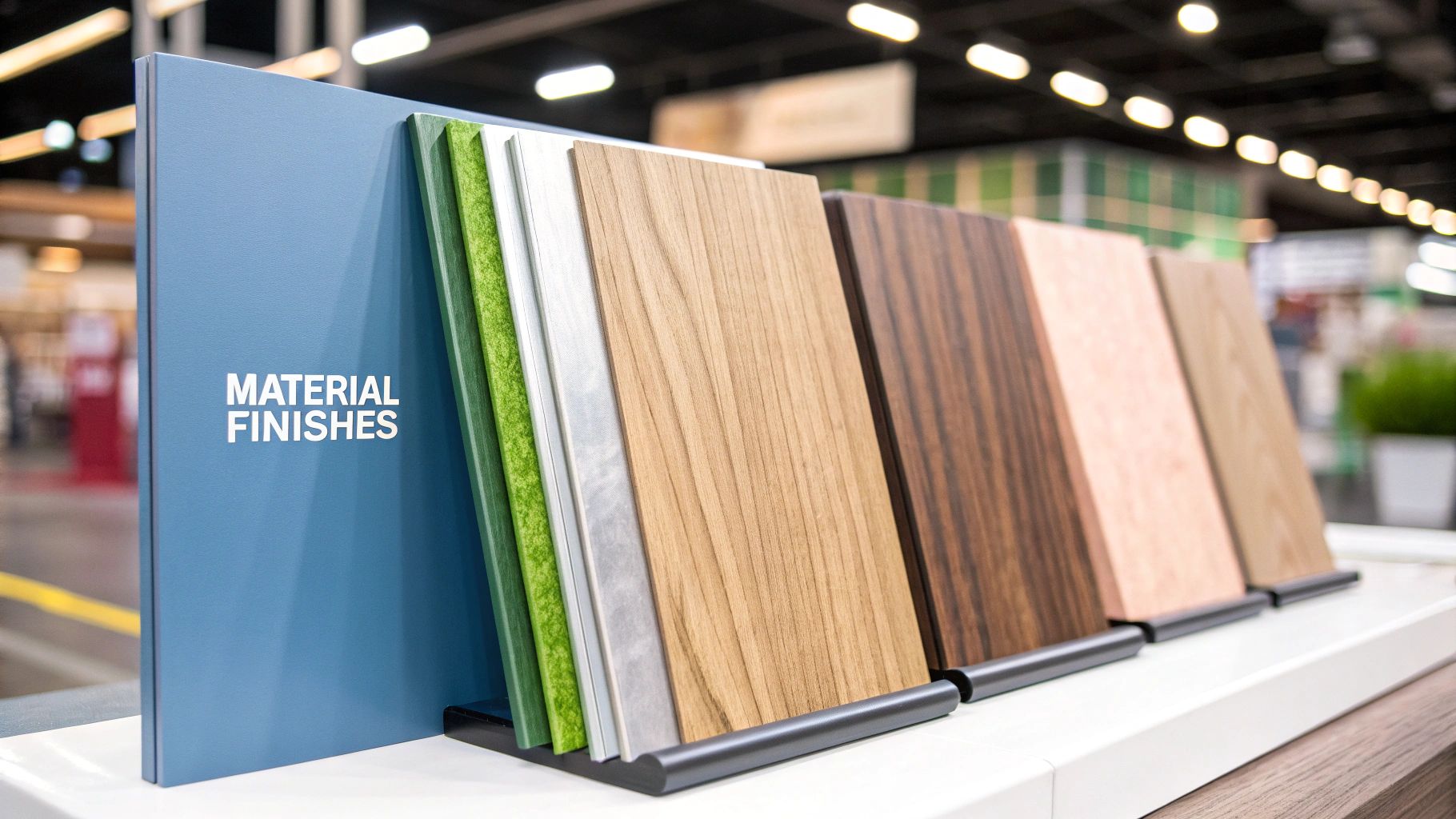
Contrasting Professional and Home Use Cases
Where you plan to use a display stand completely changes the game. The demands of a bustling retail floor are a world away from the needs of a home-based designer or sewing enthusiast.
In a shop, it’s all about durability and efficiency. Displays have to be tough enough to handle constant interaction from staff and customers day in, day out. Garment rails must hold a significant amount of weight without a hint of wobbling, and mannequins need to be simple to dress and reposition quickly.
In a home sewing studio or a designer’s workspace, the priorities shift from high-volume resilience to function and precision. Here, a pinnable dress form is an absolutely essential tool. Its fabric-covered torso is specifically designed for draping fabric, creating patterns, and fine-tuning the fit of a garment—all tasks that are impossible on a hard-shell retail mannequin.
Let’s break down the key differences.
| Feature | Busy Retailer Needs | Home Designer Needs |
|---|---|---|
| Primary Goal | Maximise sales and visual appeal | Facilitate garment creation and fitting |
| Key Stand Type | Mannequins, garment rails, nesting tables | Pinnable dress forms, adjustable body forms |
| Material Focus | Durability (steel, chrome, fibreglass) | Functionality (pinnable foam, fabric covers) |
| Mobility | Wheels for easy layout changes | Often static, but lightweight for moving |
| Core Function | To display finished garments to customers | To serve as a working tool for design |
This simple comparison shows why there’s no "one-size-fits-all" solution. A retailer who invests in expensive pinnable forms for their main shop floor is spending money on a feature they’ll never use. By the same token, a designer trying to drape fabric on a glossy fibreglass mannequin is in for a very frustrating and fruitless afternoon.
Ultimately, picking the right clothing display stands is about making a smart investment. It’s about choosing tools that not only show off your clothes beautifully but also fit perfectly into your workflow and amplify your brand’s unique message. This way, you can be sure every pound spent is working towards your goals.
Styling Displays to Capture Attention and Drive Sales
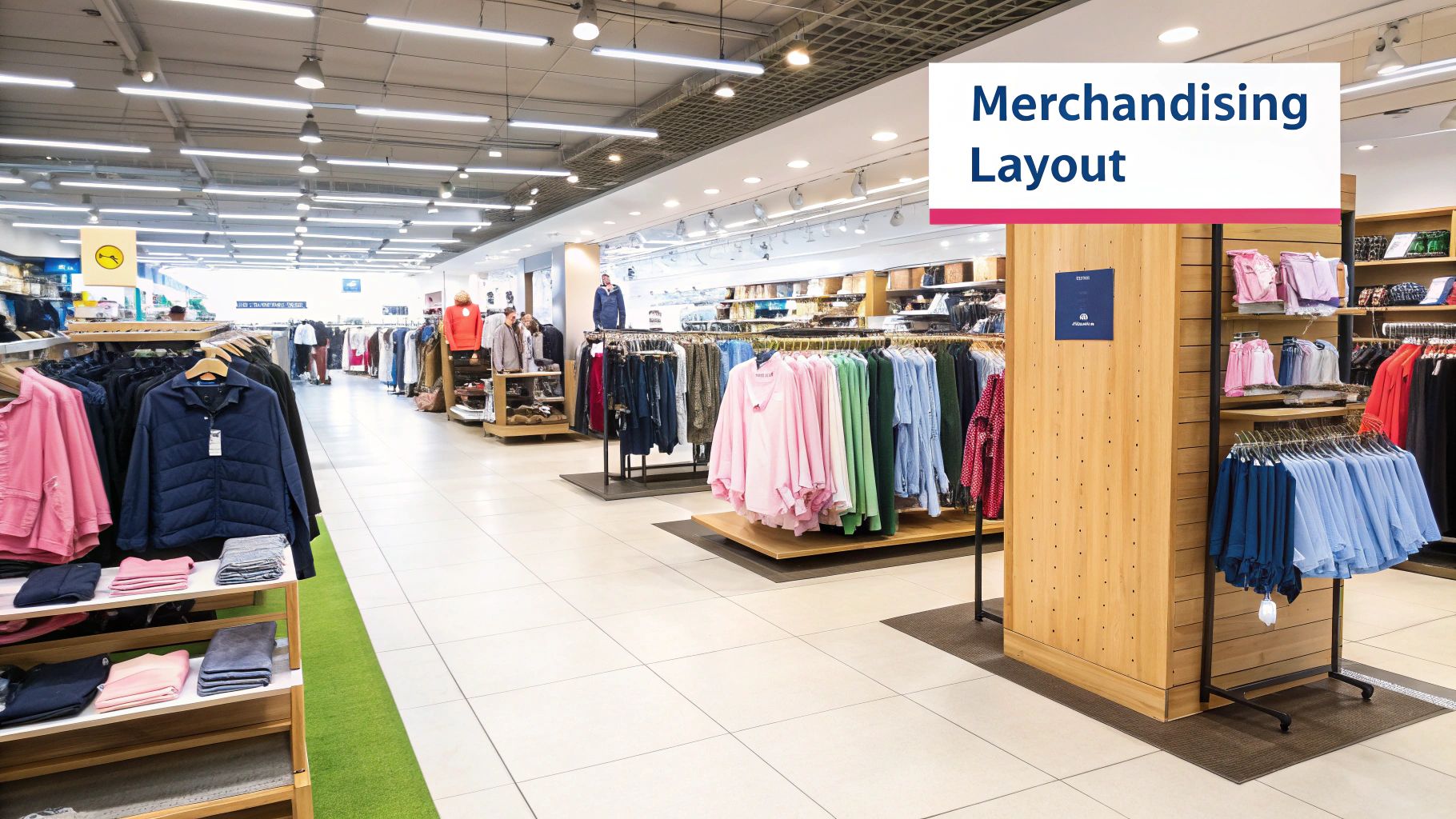
Having the right clothing display stands is a brilliant start, but it's only half the job. The real magic happens when you style them with flair and purpose. This is where you transform simple fixtures into powerful sales tools that genuinely command attention. An expertly styled display is like having a silent conversation with your customer, inviting them to connect with your products on a much deeper level.
Every display, from a full-body mannequin to a humble garment rail, is an opportunity to tell a story. This narrative approach is what separates a forgettable shop from a memorable brand experience. It’s all about creating a visual hook that stops shoppers in their tracks and makes them feel something about the clothes you sell.
Crafting Compelling Visual Stories
Storytelling in visual merchandising simply means grouping items to suggest a lifestyle or an occasion. Don't just stick a dress on a mannequin and call it a day; create a complete look. This is your chance to show customers how your pieces fit together, inspiring them to build an entire outfit from what they see.
Think about the story you want to tell. Is it a "Weekend Getaway" featuring casual layers, a stylish bag, and sunglasses? Or perhaps a "Confident Workwear" theme with a sharp blazer, tailored trousers, and a professional tote?
Here are a few key techniques to help build your story:
- Layering: Combine different garments to add depth and show versatility. A shirt under a jumper, topped with a jacket, looks far more interesting and aspirational than a single item.
- Accessorising: Use accessories like scarves, jewellery, and hats to complete the look. This not only makes the display more appealing but also naturally encourages those valuable add-on sales.
- Grouping: Place complementary items near each other. If a mannequin wears a stunning dress, make sure the rail beside it features similar styles or colours so the customer can easily explore.
The Power of Colour and Balance
Colour is one of the most potent tools in your styling arsenal. A well-thought-out colour story on a garment rail can create immediate visual impact, drawing customers in from across the room. You could create a gradient effect, moving from light to dark shades, or group bold, contrasting colours together for a dramatic, eye-catching statement.
Just as important is maintaining a sense of visual balance. An overcrowded rack feels overwhelming and can cheapen the perception of your merchandise. A good rule of thumb is to leave enough space between hangers so each garment has room to breathe. It makes browsing easier and elevates the perceived value of every single piece.
Your display is a silent conversation with your customer. A cluttered, chaotic display shouts "discount," while a clean, thoughtfully arranged one whispers "quality and style." The goal is to create a dynamic presentation that feels both inspiring and approachable.
The importance of these strategies isn't a secret. The global market for clothing display racks, valued at approximately $5 billion in 2025, is set for significant growth, reflecting a huge industry investment in creating better shopping experiences. In the UK, major retailers rely on well-designed displays to drive sales, a trend that highlights their commercial power.
Creating Focal Points with Lighting
Finally, never underestimate the power of good lighting. Strategic lighting can turn a standard display into a theatrical focal point. Use spotlights to highlight a key mannequin or to draw attention to a new collection on a rail.
Lighting helps to create mood, add drama, and guide the customer’s eye exactly where you want it. It’s the finishing touch that brings your entire visual story to life, ensuring your carefully styled displays get the attention they truly deserve. For more expert tips, check out our in-depth visual merchandising guidelines to help you master these techniques.
Protecting Your Investment with Proper Maintenance
Think of your clothing display stands as a significant business asset. High-quality stands don't come cheap, and just like any other investment, they need a bit of care to stay looking sharp and professional for years to come. A well-maintained display sends a clear message about your brand's commitment to quality. Let them get rusty or damaged, and they can drag down your entire presentation.
It’s helpful to see maintenance as a core part of your visual merchandising. After all, a gleaming, pristine stand makes your garments look their best, while a scuffed, dusty one can subtly suggest the product itself might be subpar. This simple, routine care isn't just about cleaning; it's about protecting your investment and making sure your displays continue to work hard for your business.
Essential Cleaning for Different Materials
You can't use the same cleaning approach for every stand. Different materials have different needs, and using the wrong product could easily cause permanent damage, like scratching a chrome finish or discolouring a fabric form.
-
Fibreglass Mannequins: These are tough, but they can be scratched by harsh, abrasive cleaners. The best approach is to use a soft, microfibre cloth with a bit of water and a mild, non-ammonia-based soap. For stubborn scuffs, a magic eraser sponge often does the trick, but it’s always wise to test it on a hidden spot first.
-
Chrome Garment Rails: The main goals here are to keep that brilliant shine and prevent any rust from setting in. Dust them regularly with a dry cloth. To tackle fingerprints and smudges, a proper chrome polish works wonders. In a pinch, a mix of water and a little white vinegar will do, but make sure you buff it completely dry with a clean cloth to prevent water spots.
-
Fabric Dress Forms: The fabric covering on a dress form is a magnet for dust and can stain easily. A quick once-over with a lint roller or the brush attachment on your vacuum is perfect for regular upkeep. If you spot a small stain, gently dab it with a damp cloth and a touch of fabric cleaner. Be careful not to soak the material.
A little bit of cleaning every day goes a long way. A quick wipe-down prevents the build-up of dust and grime that later demands more aggressive—and potentially damaging—cleaning methods.
Safe Handling and Smart Storage
It’s often not the day-to-day use that causes damage, but what happens during setup, breakdown, or storage. A few simple precautions can make a huge difference in how long your clothing display stands last. For instance, when you need to move a mannequin, always lift it by its torso or base—never by the more fragile arms or hands.
When it comes to storage, take the time to disassemble your stands completely if the design allows for it. Wrap individual parts, like mannequin limbs or the components of a garment rail, in bubble wrap or soft blankets. This stops them from scratching or denting each other in storage.
Finally, find a dry, temperature-controlled spot to keep them. This helps prevent metal parts from rusting and stops mould from growing on fabric forms. Following these steps ensures your displays are always in top condition and ready to create an impressive presentation.
The Future of Retail Displays and Sustainability
The world of retail never stands still, and the trusty clothing display stands we all rely on are evolving right along with it. As we look to the future, two major trends are shaping how we think about visual merchandising: a serious commitment to sustainability and the clever integration of smart technology. These aren't just fleeting fashions; they signal a deep shift in what customers value and what makes for a successful retail strategy.
Adopting this forward-thinking mindset means choosing displays that not only work brilliantly today but are also in step with where the industry is heading. It’s about creating a shop environment that feels responsible, responsive, and genuinely engaging.
The Rise of Eco-Conscious Displays
Today’s shoppers are more clued-up and principled than ever. A growing number of people actively choose brands that reflect their own environmental values, and this expectation now includes the very fixtures in the shop. This has led to a real surge in demand for sustainable clothing display stands that tell a positive story.
Retailers are now consciously choosing materials that are both attractive and kind to the planet. We're seeing a clear move towards options like:
- Reclaimed Wood: This brings a warm, authentic feel to a space, giving beautiful old timber a new purpose.
- Recycled Metals: Using repurposed aluminium and steel reduces the environmental cost of mining and production.
- Bamboo and Cork: These are fantastic, fast-growing renewable resources that offer a light yet sturdy alternative to more traditional materials.
This shift isn't just a marketing ploy; it's a genuine reflection of evolving brand ethics. It shows a real commitment to sustainability that strikes a chord with thoughtful customers, adding an extra layer of integrity to your brand story. To learn more about how fixtures can define your retail space, have a look at our guide to 10 essential retail display solutions.
Choosing sustainable displays sends a powerful message. It tells your customers that you care about quality, design, and the planet, building a stronger, more meaningful connection.
Smart and Adaptable Display Solutions
Technology is also forging a new path for retail displays. The future is interactive and data-informed, with fixtures becoming far more than just static props. We're already seeing 'smart' mannequins fitted with sensors that can gather valuable, anonymous data on footfall and customer engagement. This helps retailers figure out which displays are actually grabbing attention and which ones are being ignored.
Beyond the high-tech, there’s also a growing focus on modularity and adaptability. Modern retail spaces need to be agile, able to transform quickly for a new season, a special promotion, or a pop-up event. Modular clothing display stands, which can be reconfigured with ease, are perfectly suited to this fast-paced environment. These flexible systems ensure your displays can grow and change with your business, making them a smart, long-term investment.
Frequently Asked Questions About Clothing Displays
It's completely normal to have a few questions when you're wading into the world of clothing display stands. Whether you're setting up a new retail space or finally organising your home sewing studio, getting the right answers helps you choose with confidence. You want fixtures that don't just look the part, but genuinely work for you.
To help you get there, we've pulled together some of the most common questions we hear and answered them with practical, straightforward advice.
What Is the Main Difference Between a Mannequin and a Dress Form?
Think of it this way: a mannequin is for the shop floor, and a dress form is for the workshop. A mannequin’s job is purely about presentation. It's built to show a customer exactly how a piece of clothing will look on a human body, often using materials like fibreglass to create a realistic, stylised shape.
A dress form, on the other hand, is a proper workhorse. It’s a tool for the creator. Usually covered in linen or another pinnable fabric, it's designed so that dressmakers, designers, and tailors can drape, pin, and fit garments directly onto it. While you can certainly display finished pieces on a dress form, its primary function is hands-on creation.
The simplest way to remember it is this: Mannequins are for showing clothes, while dress forms are for making clothes. One is for the customer’s eye; the other is for the creator’s hands.
How Can I Stop My Garment Rails from Looking Overcrowded?
A stuffed, cluttered rail can instantly cheapen the look of your collection, no matter how beautiful the clothes are. The secret to avoiding this is the "two-finger rule." It's a simple but brilliant guideline: always leave about a two-finger gap between each hanger.
That little bit of breathing room works wonders. It lets each garment hang beautifully and invites customers to browse without having to wrestle items off a crammed rack. If you're aiming for a more luxurious, boutique feel, you can even widen that gap. The key is to make the shopping experience feel easy and enjoyable, not like a jumble sale.
Are Expensive Clothing Display Stands a Worthwhile Investment?
Without a doubt. While the temptation to cut costs with cheaper stands is understandable, investing in quality is one of the smartest long-term decisions you can make for your brand or your workspace. High-quality clothing display stands, built from robust materials like solid wood or heavy-duty steel, provide superior stability and a much more professional appearance.
Cheaper alternatives are often a false economy. They tend to wobble, tarnish, or break under pressure, which not only looks unprofessional but could also damage your valuable merchandise. A well-made, sturdy stand elevates the perceived value of your clothing and your brand as a whole, making it an asset that truly pays for itself.
At Display Guru, we specialise in high-quality, durable display solutions built to meet every professional and creative need. To find the perfect fixtures to elevate your presentation, explore our full collection at Display Guru.
